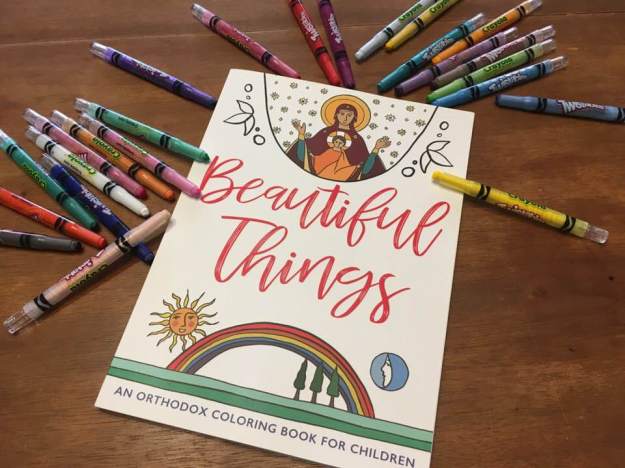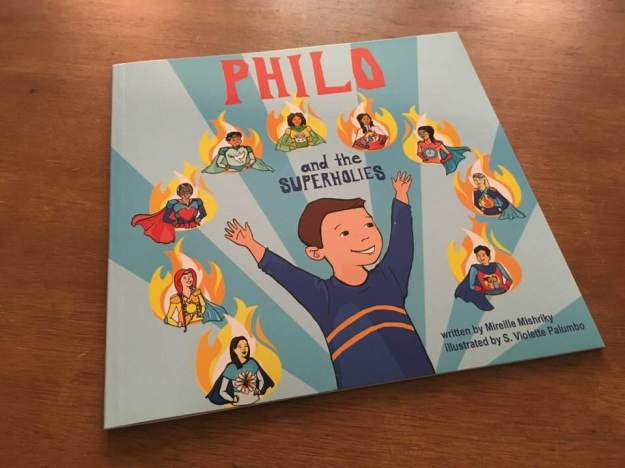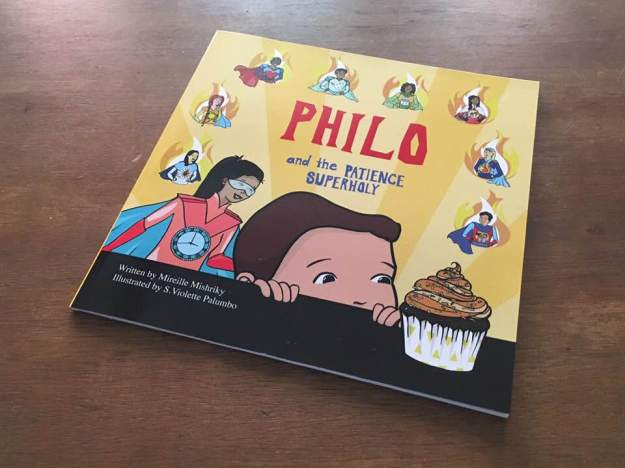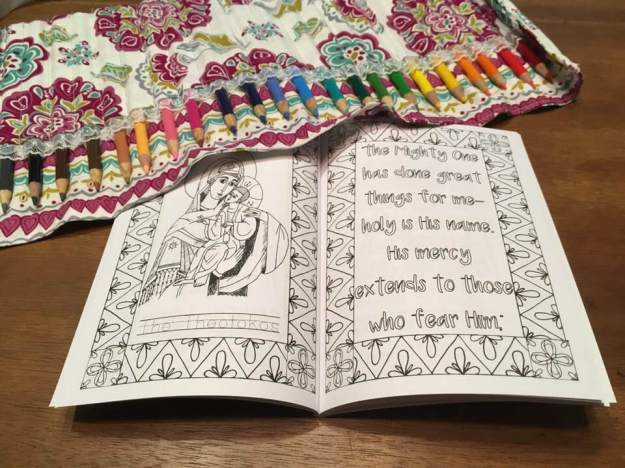We have recently come across a handful of new resources that can help Orthodox parents and educators as they instruct the children in their lives. We thank the authors for sharing electronic copies of these resources with us. We are sharing the resources with you in the order in which they came to our attention. We hope that you find them helpful as you instruct our young brothers and sisters in the Faith.

https://www.mireillemishriky.com/wp-content/uploads/2020/02/Philo-Commercial.mp4?_=1
Fans of Mireille Mishriky’s “Philo” books will be delighted to know that she has collaborated with Shereen Marcus (of Bridges to Orthodoxy) and they have created a SuperHolies-themed Vacation Church School program. This five-day program provides its purchasers with videos, crafts and activities, lesson plans including Bible stories, saint stories, and memory verses, and even “parent recap cards” that can further the children’s learning as parents ask additional questions about each day’s experience.
Each VCS session focuses one one or two SuperHolies each day. (If you are not familiar with them, the “SuperHolies” are the fruits of the Spirit). The session begins with a video featuring Philo and his “Super Challenge” of the day. The children are invited to help Philo to use a Fruit (or two) of the Spirit to help him overcome his challenge, and that Fruit, that SuperHoly, is the focus for the entire day’s session. Every session also contains a saint’s story and a passage or story from the Scriptures.
The program is designed to include two small group sessions for the children. In one, they’ll learn about an Orthodox saint who is struggling with a challenge similar to Philo’s. In the other, they’ll focus on a passage from the Scriptures that is also related to that struggle. There are planned activities, discussion suggestions, and even crafts that will support this learning. The goal of the day is to help Philo figure out what to do about his Super Challenge.
The program includes suggestions for each day’s opening and closing large group sessions (including the video of Philo’s Super Challenge of the day); two small group session lesson plans for K-1st, 2nd-3rd, and 4th-5th for each day; extra ideas (including game suggestions, songs, and videos) and the printable Parent Recap card for each of the 5 days.
Find more information here: https://bridgestoorthodoxy.com/collections/pathways
***

Gina Govender has developed a Divine Liturgy book that can help children to follow along with key portions of the Liturgy. “The Divine Liturgy: A Guide for Orthodox Children” was illustrated by Althea Botha, and has been endorsed by Archbishop Damaskinos of Johannesburg and Pretoria.
The intent of this book is to provide children with instructions so that they can easily follow along in the Divine Liturgy. At the beginning of the book, a section called “The Meaning of the Divine Liturgy”, talks children through the liturgy and encourages them to look for ways that each part of the liturgy points to the life of Christ. The pages that follow walk the children through the liturgy by including actual portions of the liturgical text illustrated by a colorful watercolor-and-ink picture. These portions of the liturgy are shared in the book: Commencement, Prayers for Peace, the Little Entrance, the Readings, the Great Entrance, Spiritual Prayers, the Creed, the Mystical Supper, the Invocation & Sanctification, Supplication, the Lord’s Prayer, Holy Communion, Prayer of Thanksgiving, and the Dismissal.
The acknowledgements page of the book encourages parents of the readers to bring their children to church, even if they are wiggly and noisy. After all, “The presence of children is a gift to the Church and a reminder that our community is growing. As Christ said, ‘Let the children come to me.’” This book can help to welcome the children and involve them in the liturgy.
Inquire about purchasing the book here: https://www.facebook.com/pg/SAHETI-Pre-Primary-and-Playschool-PTA-154113824686210/shop/ (Notes: the price noted is listed in South African Rands, and at the time of this post, equals slightly less than $15, not including shipping/handling. The book is a fundraiser for upgrades at a Hellenic playschool/pre-primary school in Senderwood, South Africa.)
***

Author Mireille Mishriky has introduced a brand new series of children’s picture books! “The Super-Secret TreeHouse Bible Club” will take children on an adventure with a group of children who are struggling with the virtues. Along the way, the children in the Super-Secret TreeHouse Bible Club will get to know some of the lesser-known saints from the Bible. The first book, “The Super-Secret TreeHouse Bible Club and the Prophet Micaiah” walks alongside Marina, Theodore, and Marcorios as they learn why it takes courage to be honest, and how God blesses people who tell the truth.
Marina isn’t sure what to do because her friend encouraged her to lie, or she would no longer be her friend. Theo doesn’t know how to LIVE the Bible, as their priest said in his homily. Marco also doesn’t know how they can possibly “…not merely listen to the Word and so deceive yourselves. Do what it says”, but he suggests that they begin by praying. And so, they do.
A bird appears as they pray, and it helps them find a story in the scriptures about the prophet Michaiah, who told the truth when hundreds of others were lying. It landed him in jail. But in the end, he was right, and if the kings had listened to him and obeyed his words instead of the ones they wanted to hear, they would have been spared much heartache. Marina makes a secret wish, and the bird helps it to come true: the children get to meet the prophet Michaiah, who appears in their treehouse, and they ask him a few questions.
His wisdom helps Marina know what to do, and the book ends on a positive note as Marina and her friend Sarah come clean on what happened.
This book is available as an ebook, and you will find it here: https://www.amazon.com/Super-Secret-Treehouse-Prophet-Micaiah-ebook/dp/B085TBL5XH/










 “Something that is very hard to understand is that people love you, but the unconditional, filling love we are looking for can only be given to us by the Lord. Only God can fill that lonely void that hurts so badly sometimes. God always accepts you. He always loves you; there is no rejection from the Lord.
“Something that is very hard to understand is that people love you, but the unconditional, filling love we are looking for can only be given to us by the Lord. Only God can fill that lonely void that hurts so badly sometimes. God always accepts you. He always loves you; there is no rejection from the Lord.










